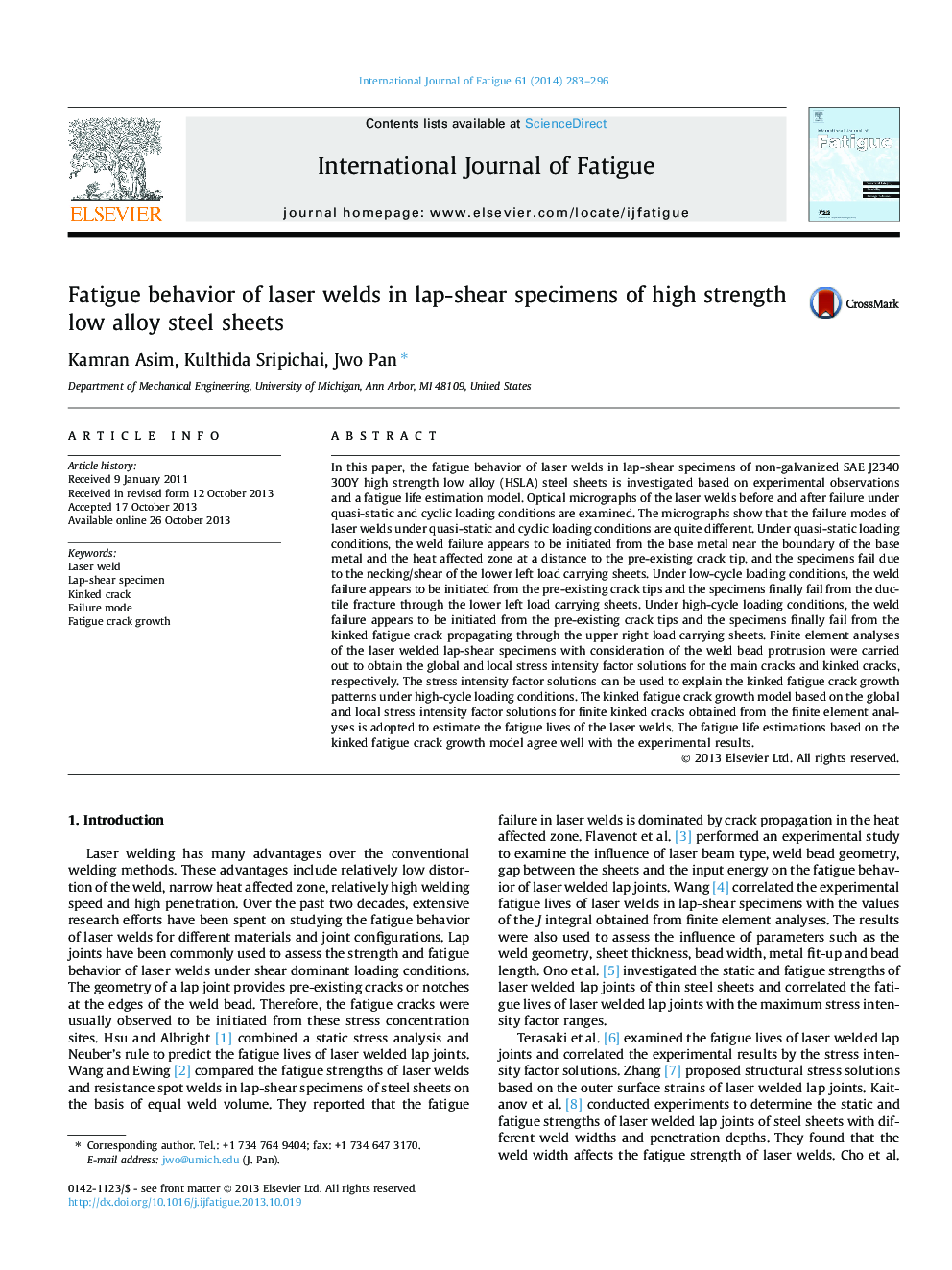| Article ID | Journal | Published Year | Pages | File Type |
|---|---|---|---|---|
| 777651 | International Journal of Fatigue | 2014 | 14 Pages |
•Fatigue behavior of laser welds of HSLA steel sheets is investigated.•Under quasi-static loading conditions, weld failure is initiated from the base metal.•Under cyclic loading conditions, weld failure is initiated from the crack tips.•The stress intensity factor solutions for the main and kinked cracks are obtained.•Fatigue life estimations based on a kinked crack growth model agree with the experimental results.
In this paper, the fatigue behavior of laser welds in lap-shear specimens of non-galvanized SAE J2340 300Y high strength low alloy (HSLA) steel sheets is investigated based on experimental observations and a fatigue life estimation model. Optical micrographs of the laser welds before and after failure under quasi-static and cyclic loading conditions are examined. The micrographs show that the failure modes of laser welds under quasi-static and cyclic loading conditions are quite different. Under quasi-static loading conditions, the weld failure appears to be initiated from the base metal near the boundary of the base metal and the heat affected zone at a distance to the pre-existing crack tip, and the specimens fail due to the necking/shear of the lower left load carrying sheets. Under low-cycle loading conditions, the weld failure appears to be initiated from the pre-existing crack tips and the specimens finally fail from the ductile fracture through the lower left load carrying sheets. Under high-cycle loading conditions, the weld failure appears to be initiated from the pre-existing crack tips and the specimens finally fail from the kinked fatigue crack propagating through the upper right load carrying sheets. Finite element analyses of the laser welded lap-shear specimens with consideration of the weld bead protrusion were carried out to obtain the global and local stress intensity factor solutions for the main cracks and kinked cracks, respectively. The stress intensity factor solutions can be used to explain the kinked fatigue crack growth patterns under high-cycle loading conditions. The kinked fatigue crack growth model based on the global and local stress intensity factor solutions for finite kinked cracks obtained from the finite element analyses is adopted to estimate the fatigue lives of the laser welds. The fatigue life estimations based on the kinked fatigue crack growth model agree well with the experimental results.
